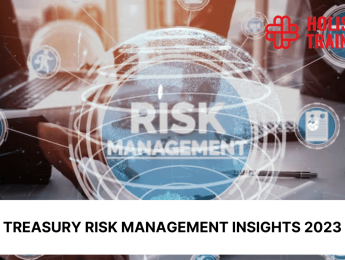- Table of Contents
- Introduction
- What Is Records Management?
- Who Handles Records Management in an Organisation?
- Records Managers
- Collaborative Effort Across Departments
- Records Management Committees
- How Does Records Management Help Your Business?
- Risk Mitigation and Compliance Assurance
- Enhanced Decision-Making and Operational Efficiency
- Data Security and Privacy Protection
- Operational Resilience and Disaster Recovery
- Resource Optimisation and Cost Savings
- Customer Service Excellence
- The Step-by-step Process of Records Management
- Step 1: Creation and Capture
- Step 2: Classification and Indexing
- Step 3: Storage and Maintenance
- Step 4: Access Control and Security
- Step 5: Retrieval and Usage
- Step 6: Retention Policies
- Step 7: Disposition and Destruction
- Step 8: Monitoring and Auditing
- Step 9: Continuous Improvement
- Step 10: Employee Training and Awareness
- The Role of Technology in Facilitating Records Management
- 1. Document Management Systems (DMS)
- 2. Artificial Intelligence (AI) and Machine Learning (ML)
- 3. Automation of Workflows
- 4. Cloud-Based Solutions
- 5. Electronic Signatures and Authentication
- 6. Data Encryption and Security Measures
- 7. Mobile Accessibility
- 8. Analytics for Business Intelligence
- 9. Integration with Other Systems
- User Training and Support
- Records Management in Different Industries
- Engineering
- Healthcare
- Oil & Gas
- Education
- Conclusion
Introduction
In the intricate dance of business operations, one often overlooked but crucial partner is records management. It's the meticulous curator behind the scenes, orchestrating the flow of information that sustains the heartbeat of an organisation. In this blog post, we embark on a journey through the realms of records management, exploring its definition, the hands that mould its landscape, its indispensable benefits, the meticulous step-by-step process it entails, the symbiotic relationship it shares with technology, and how its nuances differ across industries such as engineering, healthcare, oil & gas, and education.
What Is Records Management?
At its core, records management is the art and science of systematically controlling an organisation's records throughout their lifecycle. It encompasses the creation, maintenance, and eventual disposition of records, fostering order and coherence in the vast sea of information that organisations navigate daily. Records, in this context, go beyond mere documents; they include emails, contracts, invoices, and any other piece of information vital to an organisation's operations.
Who Handles Records Management in an Organisation?
In the intricate web of modern organisational structures, the responsibility of records management is not confined to a singular entity; rather, it is a collaborative effort that draws upon the expertise of various stakeholders. At the forefront of this concerted endeavour are records managers, individuals who possess a unique blend of organisational finesse, information governance knowledge, and a keen understanding of the specific needs of their industry.
Records Managers
Records managers serve as the custodians of an organisation's information assets. Their role extends beyond the traditional understanding of file organisation and archiving; they are strategic architects, designing and implementing systems that ensure the seamless flow of information throughout its lifecycle. These professionals are often armed with certifications and specialised training in records management, enabling them to navigate the complex landscape of compliance requirements, legal considerations, and technological advancements.
The responsibilities of records managers are multifaceted. They collaborate with various departments to establish and enforce records management policies. This involves crafting guidelines for the creation, classification, retention, and disposal of records, aligning them with both industry regulations and the unique needs of the organisation. Records managers also play a crucial role in educating staff about the importance of proper records management practices, fostering a culture of responsibility and accountability.
As technology continues to evolve, records managers are at the forefront of integrating cutting-edge solutions into their workflows. From implementing document management systems (DMS) to harnessing the power of artificial intelligence for automated classification, records managers leverage technology to enhance the efficiency and accuracy of their processes.

Collaborative Effort Across Departments
While records managers are the torchbearers of records management, their efforts are not standalone. Collaboration with various departments is integral to the success of any records management initiative. Department heads, IT specialists, legal experts, and compliance officers form a collective force that ensures a holistic and effective approach.
Department Heads
These individuals provide critical insights into the specific needs and nuances of their departments. They collaborate with records managers to tailor records management policies that align with the workflows and objectives of their teams.
IT Specialists
In an era dominated by digital information, IT specialists are essential partners in records management. They assist in the selection and implementation of technological solutions, address data security concerns, and ensure the seamless integration of records management systems with existing IT infrastructure.
Legal and Compliance Officers
Navigating the legal landscape is a paramount concern for records management. Legal and compliance officers work in tandem with records managers to ensure that the organisation adheres to industry regulations, mitigates legal risks, and maintains a defensible records management strategy.
Records Management Committees
In some organisations, a dedicated records management committee may be formed, comprising representatives from various departments. This committee serves as a forum for ongoing discussions, policy reviews, and the resolution of challenges related to records management. The collective expertise of committee members ensures that records management strategies remain dynamic, adapting to the evolving needs of the organisation and the external landscape.
In essence, the orchestration of records management is a harmonious collaboration, with records managers at the helm and a symphony of departmental experts ensuring that the organisation's information ecosystem remains finely tuned and resilient in the face of evolving challenges. The success of records management lies not just in meticulous organisation but in the collective commitment of those who recognise the intrinsic value of information as a strategic asset.
How Does Records Management Help Your Business?
Statistics show that in 2021, the global document management system market was valued at USD 5.00 billion, increasing to USD 5.55 billion in 2022. It is also expected that this market will witness substantial growth, reaching USD 16.42 billion by 2029. This clearly shows how vital records management is and continues to be. But why is that? Let’s find out.
Risk Mitigation and Compliance Assurance
In the complex landscape of business operations, legal and regulatory landscapes are ever-evolving. Records management emerges as a shield, protecting organisations from potential legal pitfalls and ensuring compliance with industry regulations. By systematically organising and documenting business activities, organisations create a defensible position in case of audits or legal challenges.
Moreover, compliance with data protection laws and industry-specific regulations becomes more achievable with a robust records management system. Whether it's GDPR, HIPAA, or any other regulatory framework, adherence is not just a checkbox; it's a continuous commitment, and records management provides the structure to uphold this commitment.
Enhanced Decision-Making and Operational Efficiency
In the fast-paced business environment, decisions need to be informed, timely, and aligned with organisational objectives. Records management transforms information into a strategic asset, providing decision-makers with a comprehensive and accurate view of historical, current, and predictive insights.
Efficient access to relevant information means quicker and more informed decision-making. No longer bogged down by the labyrinth of disorganised data, leaders can navigate confidently, relying on the structured insights provided by a well-implemented records management system. This streamlined decision-making process, in turn, cascades throughout the organisation, fostering operational efficiency at every level.
Data Security and Privacy Protection
In an era where data breaches make headlines, safeguarding sensitive information is paramount. Records management acts as a vigilant guardian, implementing measures to protect data integrity and confidentiality. Access controls, encryption, and regular audits are integral components of a records management strategy aimed at fortifying the organisation's data security posture.
Not only does this protect the organisation from external threats, but it also establishes trust among customers and partners. Clients are more likely to engage with businesses that prioritise the protection of their sensitive information, and records management plays a pivotal role in building and maintaining this trust.
Operational Resilience and Disaster Recovery
Disasters, whether natural or technological, can wreak havoc on an unprepared organisation. Records management extends beyond day-to-day efficiency; it serves as a key player in disaster recovery and business continuity planning. By maintaining offsite backups and implementing cloud-based solutions, records management ensures that critical information remains accessible even in the face of unforeseen disruptions.
The ability to swiftly recover and resume operations minimises downtime, protecting both financial and reputational assets. In essence, records management becomes a business continuity ally, offering a lifeline when the unexpected occurs.
Resource Optimisation and Cost Savings
The adage "time is money" rings especially true in the business world. Inefficient processes and the inability to locate critical information can lead to wasted time and resources. Records management streamlines workflows, reduces redundancies, and optimised resource allocation.
By embracing digital solutions and automation, organisations can minimise manual labour associated with records management tasks. This not only saves time but also translates into tangible cost savings. Additionally, the efficient use of storage space, whether physical or digital, contributes to further cost optimisation.
Customer Service Excellence
The customer-centric landscape demands organisations to be agile, responsive, and well-informed. Records management plays a pivotal role in achieving these qualities. With organised and readily accessible customer records, organisations can provide personalised and efficient customer service.
Timely access to customer histories, preferences, and interactions enables employees to anticipate needs, resolve issues promptly, and foster long-term customer relationships. In a competitive market where customer experience is a key differentiator, records management becomes a silent architect of exceptional service.
In short, the impact of records management on business transcends the realm of mere organisation; it is a strategic imperative that fortifies the foundations of an organisation. From mitigating risks and ensuring compliance to enhancing decision-making and operational efficiency, records management is a catalyst for growth, resilience, and sustained success. In embracing its principles, businesses not only navigate the complexities of the information age but thrive in an environment where information is not a burden but a powerful asset.
The Step-by-step Process of Records Management
The journey of records management is akin to a well-choreographed dance, where each step is purposeful, ensuring the seamless flow of information from creation to disposition. Let's unravel the intricacies of this process, breaking it down into distinct steps that collectively form the backbone of effective records management.
Step 1: Creation and Capture
The inception of the records management process lies in the creation and capture of information. Whether it's a contract, an email, or a financial document, the key is to capture information at its source. During this step, organisations need to establish clear guidelines for what constitutes a record, ensuring that relevant and valuable information is not overlooked.
Step 2: Classification and Indexing
Once created, records need a home within the organisational ecosystem. This is where classification and indexing come into play. Records are categorised based on their content, relevance, and importance to the organisation. A meticulous indexing system ensures that records are easily retrievable when needed, fostering efficiency in day-to-day operations.
Step 3: Storage and Maintenance
With classification complete, records find their place in storage. This can be physical or digital, depending on the nature of the information and the organisation's infrastructure. Maintenance is an ongoing process, ensuring that records remain accurate, up-to-date, and compliant with any changes in regulations or organisational needs. Regular audits may be conducted to verify the integrity of stored records.
Step 4: Access Control and Security
Not all records are created equal, and not everyone within an organisation should have unrestricted access to all information. Implementing access controls and security measures is crucial to safeguard sensitive data. This step involves defining user roles, setting permissions, and employing encryption technologies to protect against unauthorised access.
Step 5: Retrieval and Usage
The true value of records management is realised when information is needed. A well-organised system facilitates quick and efficient retrieval of records. Whether for decision-making, audits, or daily operations, the ability to access accurate information in a timely manner empowers employees and enhances overall productivity.
Step 6: Retention Policies
Not all records are meant to be kept indefinitely. Retention policies govern the lifecycle of records, specifying how long they should be retained based on legal requirements, industry standards, and organisational needs. Some records may be earmarked for permanent preservation, while others may have a finite lifespan.
Step 7: Disposition and Destruction
As records reach the end of their lifecycle, a carefully planned disposition process comes into play. This step involves deciding whether a record should be archived, destroyed, or transferred to another entity. Destruction must be carried out in compliance with legal and regulatory requirements to avoid any risks associated with data breaches or non-compliance.
Step 8: Monitoring and Auditing
To ensure the continued effectiveness of the records management process, regular monitoring and auditing are essential. This involves assessing the adherence to established policies, evaluating the efficiency of retrieval processes, and identifying areas for improvement. Monitoring also serves as a proactive measure, allowing organisations to address potential issues before they escalate.
Table 1: Records Management Key Performance Indicators (KPIs)
KPIs | Description |
Compliance Rate | Ensure adherence to industry regulations and standards. |
Retrieval Time Efficiency | Streamline processes for quick and efficient information retrieval. |
Data Security Effectiveness | Evaluate the robustness of measures protecting sensitive information. |
Accuracy in Classification | Assess precision in categorising and indexing diverse records. |
Cost Savings through Automation | Quantify savings achieved by automating records management tasks. |
Step 9: Continuous Improvement
The landscape of business, technology, and regulations is dynamic. Records management is not a static process but an evolving one. Organisations should continually assess and refine their records management strategies, embracing technological advancements and adapting to changes in their industry and the broader business environment.
Step 10: Employee Training and Awareness
Even the most sophisticated records management system can falter without the support and understanding of the workforce. Providing comprehensive training and fostering awareness about the importance of records management ensures that employees are active participants in the process. This includes educating them on proper data handling, adherence to policies, and the broader implications of effective records management on the organisation.
In essence, the step-by-step process of records management is a continuous cycle, each phase interlinked with the others. It's a dynamic orchestration that requires precision, adaptability, and a commitment to excellence. As organisations traverse the landscape of information, mastering these steps ensures that the dance of records management is not just a routine but a symphony of efficiency and resilience.
The Role of Technology in Facilitating Records Management
In the contemporary landscape, the marriage of records management and technology is not just a convenience but a necessity. Technology acts as a transformative force, elevating the efficiency, accuracy, and scalability of records management processes. Here are some of the ways technology facilitates records management, from document creation to disposal:
1. Document Management Systems (DMS)
At the core of modern records management is the adoption of Document Management Systems (DMS). These systems serve as digital repositories, offering a centralised and organised space for document creation, storage, retrieval, and collaboration. DMS streamlines the workflow, ensuring that documents are consistently categorised, indexed, and accessible to authorised users. However, according to an M-Files survey, only 24% of those surveyed reported that their organisations employ a Document Management System.
With version control, audit trails, and collaboration features, DMS not only simplifies document management but also enhances the overall efficiency of records-related processes. It minimises the risk of version conflicts, ensures the security of sensitive information, and provides a user-friendly interface for seamless navigation.
2. Artificial Intelligence (AI) and Machine Learning (ML)
The integration of AI and ML technologies brings a new dimension to records management. These intelligent systems automate the classification and indexing of records, reducing the manual effort required for sorting through vast datasets. AI algorithms can learn from patterns, making the classification process more accurate and adaptive to the evolving nature of records.
By harnessing AI and ML, organisations can not only expedite the categorisation of records but also uncover valuable insights from data patterns. Predictive analytics can assist in forecasting trends, improving decision-making processes, and identifying potential risks or opportunities within the vast sea of information.
3. Automation of Workflows
Automation is a cornerstone of efficiency in records management. It involves the use of technology to streamline repetitive tasks, reducing the likelihood of human error and optimising time and resources. Workflows, such as document approval processes, can be automated, ensuring that records move seamlessly through their lifecycle.
Automated workflows contribute to consistency in records management practices. From record creation to disposition, predefined rules and triggers guide the flow of information, minimising bottlenecks and enhancing the overall agility of the organisation.
4. Cloud-Based Solutions
The advent of cloud technology has revolutionised the way organisations approach records management. Cloud-based solutions offer scalable and flexible storage options, eliminating the constraints associated with traditional physical storage. This is particularly advantageous in an era where remote work and collaboration are increasingly prevalent. In fact, a significant 77% of business owners now express a desire for remote access to files, according to Record Storage.
Cloud solutions facilitate secure remote access to records, allowing authorised personnel to retrieve and collaborate on documents from anywhere with an internet connection. Additionally, cloud-based storage provides a robust disaster recovery mechanism, ensuring the resilience of records in the face of unforeseen events.
5. Electronic Signatures and Authentication
In a digital world, the need for secure and legally recognised signatures is paramount. Technology enables the implementation of electronic signatures, providing a secure and efficient way to sign and authenticate documents. This not only expedites approval processes but also enhances the overall security and traceability of records.
Electronic signatures, often integrated into DMS and workflow automation systems, contribute to the integrity of records. They are backed by encryption and authentication measures, ensuring that signed documents are tamper-proof and legally binding.
6. Data Encryption and Security Measures
The protection of sensitive information is a cornerstone of records management. Technology plays a pivotal role in implementing robust security measures, including encryption of stored data, access controls, and secure transmission protocols. These measures safeguard records from unauthorised access, ensuring the confidentiality and integrity of information assets.
The integration of cutting-edge cybersecurity technologies, such as biometric authentication and advanced encryption algorithms, fortifies the defence against potential threats. This not only protects the organisation's data but also enhances trust among stakeholders, including customers and regulatory bodies.
7. Mobile Accessibility
The ubiquity of mobile devices has reshaped the way we work and access information. Technology in records management extends to mobile accessibility, allowing authorised personnel to retrieve, review, and contribute to records using smartphones and tablets. This flexibility enhances the agility of organisations, particularly in dynamic industries where quick decision-making is paramount.
Mobile accessibility is often seamlessly integrated into DMS and cloud-based solutions, ensuring that records remain accessible without compromising security. This capability is especially beneficial for professionals who need to access critical information while on the move.
8. Analytics for Business Intelligence
Beyond the basic functions of storage and retrieval, technology in records management contributes to business intelligence. Advanced analytics tools analyse patterns, trends, and user behaviours within records, offering valuable insights that can inform strategic decision-making.
By leveraging analytics, organisations can identify areas for process optimisation, assess the effectiveness of records management policies, and uncover opportunities for innovation. This data-driven approach transforms records from mere repositories into strategic assets that contribute to the organisation's overall growth.
9. Integration with Other Systems
Effective records management does not operate in isolation. Technology facilitates the seamless integration of records management systems with other business-critical applications, such as Customer Relationship Management (CRM) systems, Enterprise Resource Planning (ERP) systems, and collaboration tools.
Integration ensures that records are not siloed but interconnected within the broader organisational ecosystem. For example, records related to customer interactions can be linked to CRM data, providing a comprehensive view that enhances customer service and relationship management.
User Training and Support
The introduction of technology in records management necessitates adequate training for users. User-friendly interfaces, comprehensive training programs, and ongoing support contribute to the successful adoption of technology-driven records management solutions. This ensures that employees are not only proficient in using the tools but also understand the significance of their role in maintaining the integrity of records.
In conclusion, the role of technology in facilitating records management is transformative and multifaceted. From streamlining workflows to enhancing security measures and providing actionable insights, technology is the catalyst that propels records management into the digital age. As organisations navigate the complexities of information management, embracing and optimising these technological advancements ensures that records are not just managed but leveraged as strategic assets.
Records Management in Different Industries
The application of records management principles varies across industries, each presenting unique challenges and opportunities. Let's explore how records management plays a crucial role in specific sectors, including engineering, healthcare, oil & gas, and education.
Engineering
In the field of engineering, meticulous records management is the backbone of successful project lifecycles. Engineers deal with a plethora of documents, including design plans, technical specifications, change orders, and project communication. Records management in engineering ensures that every phase of a project is well-documented, providing a historical record for future reference, compliance, and lessons learned.
Engineering records may include Computer-Aided Design (CAD) drawings, project schedules, and correspondence. Classification and indexing are critical, allowing for swift retrieval of documents when needed. This industry relies heavily on version control to track changes in design documents, ensuring that teams are working with the most current and accurate information.
Healthcare
Healthcare organisations navigate a vast landscape of patient records, regulatory requirements, and research data. Records management in healthcare is not just about compliance; it's about safeguarding patient privacy, improving clinical workflows, and supporting medical research.
Electronic Health Records (EHRs) are a cornerstone of healthcare records management, encompassing patient histories, treatment plans, diagnoses, and medication information. The classification of records in healthcare extends to sensitive categories, such as protected health information (PHI). Access controls and encryption are crucial to ensure the confidentiality and integrity of patient data.
Oil & Gas
In the oil & gas industry, records management is intricately tied to regulatory compliance and safety protocols. Rigorous documentation of exploration, drilling, and production activities is not just a best practice but a legal requirement. Records in this industry may include well logs, safety reports, environmental impact assessments, and equipment maintenance records.
Classification in oil & gas records management is often based on regulatory categories, ensuring that documents are aligned with industry standards and environmental regulations. Retention policies play a critical role in ensuring that records are maintained for the necessary duration to comply with legal requirements.
Education
In the education sector, records management encompasses a diverse array of documents, from student transcripts and enrollment records to administrative documents and research materials. Efficient records management in education supports accreditation processes, faculty collaboration, and student success tracking.
Student records may include academic transcripts, attendance records, and disciplinary reports. Classification in education records management is often based on academic departments, making it easier to organise and retrieve information. The integration of records with Learning Management Systems (LMS) and Student Information Systems (SIS) streamlines the management of educational records.
The application of records management principles is as diverse as the industries it serves. The nuances of each sector require tailored approaches to classification, access controls, and retention policies. From safeguarding patient information in healthcare to managing intellectual property in technology, effective records management is a linchpin for organisational success across industries.
Conclusion
Records management, often unsung but undeniably crucial, weaves the fabric that holds organisations together. It's a symphony of people, processes, and technology, harmonising to bring order to the chaotic world of information. As industries evolve and technology advances, the role of records management becomes increasingly pivotal. In embracing its principles, organisations not only safeguard their present but also lay a robust foundation for the future, where information is not a burden but a strategic asset.
Finally, if you’re looking to elevate your understanding of records management, make sure to check out our course, ‘Understanding Record & Document Management for Your Business.’ Empower your team to navigate the complexities of information management with finesse and foresight. It's not just about managing records; it's about mastering the orchestration of information for unparalleled organisational success. Enrol now or contact us for more information.
























